Because of Benjy’s job as a pilot, in both the U.S. Navy and with Fedex, there are few places in the world to which he has never traveled. Prior to our European vacation, Russia had remained on his “not visited” list. Our first stop in Russia was Moscow. Of all the places we traveled to on this trip, Moscow was my most favorite. It’s a gorgeous city, rich with history and culture.
We happened to be there one week before The FIFA World Cup, so preparations for the tournament were well underway and the town was in tip top shape. Our number one destination in Moscow was, of course, the Kremlin.
The Kremlin is a walled complex in the heart of Moscow. Within the walls lies Russia’s most iconic structures and destinations, namely…
St. Basil’s Cathedral.

The Tsar Bell, which is the largest bell in the world (although it never was, nor is it currently, functional)
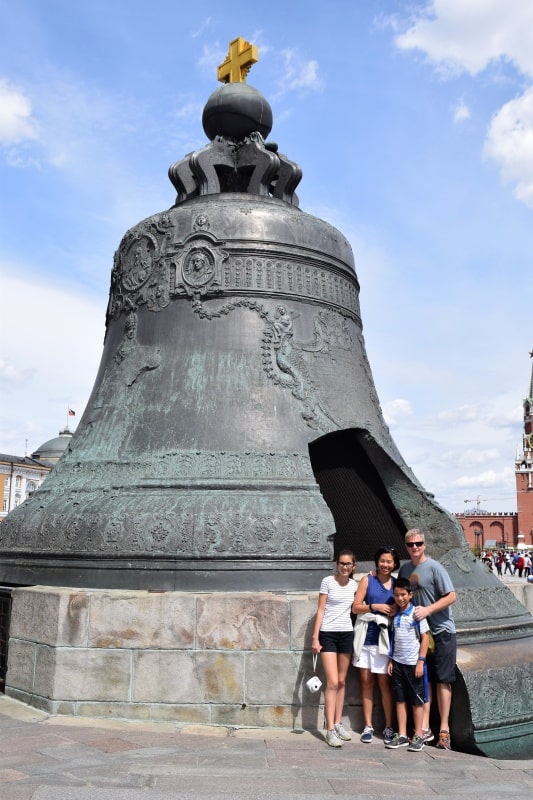
…and Red Square
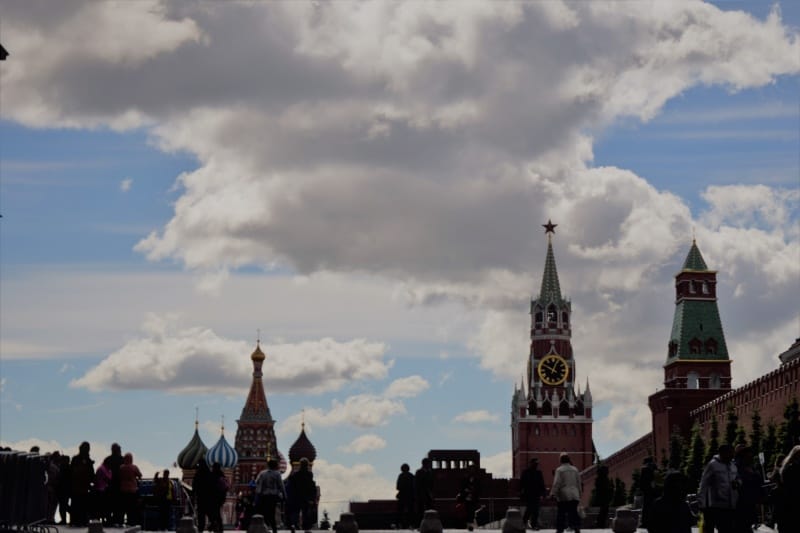
In Russian, the square is called “Krasnaya Ploschad,” which literally means “Red Square.” Many wrongly believe that the name is a reference to Russia’s communist ideology or to the color of the buildings around the square. We learned from our tour guide, however, that “krasnaya” is an old Russian word for “beautiful,” so Krasnaya Ploschad really means “beautiful square.” And it truly is beautiful!
The Senate Building is the residence of the Russian President. When the flag is up, Putin is in the house.
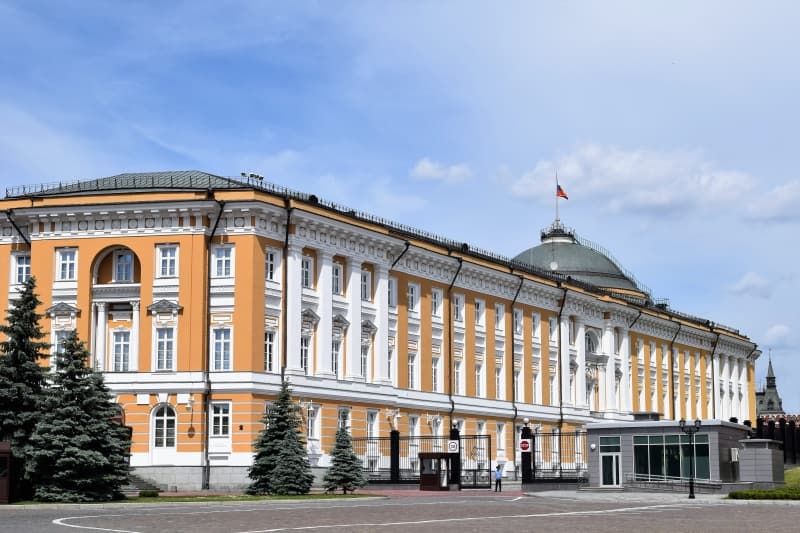
Cathedral of the Annunciation
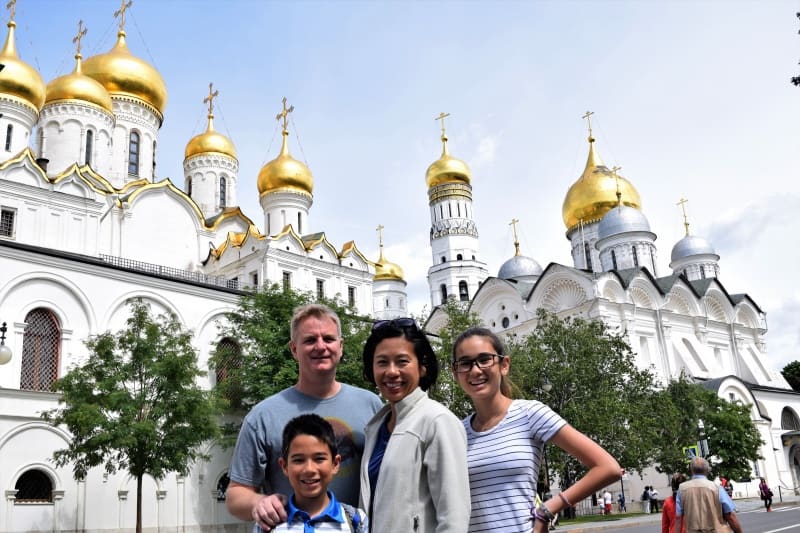 Our tour guide, Svetlana, told us that the paint on the towers is real gold and chips of it are blown off whenever Putin’s helicopter flies into the Kremlin.
Our tour guide, Svetlana, told us that the paint on the towers is real gold and chips of it are blown off whenever Putin’s helicopter flies into the Kremlin.
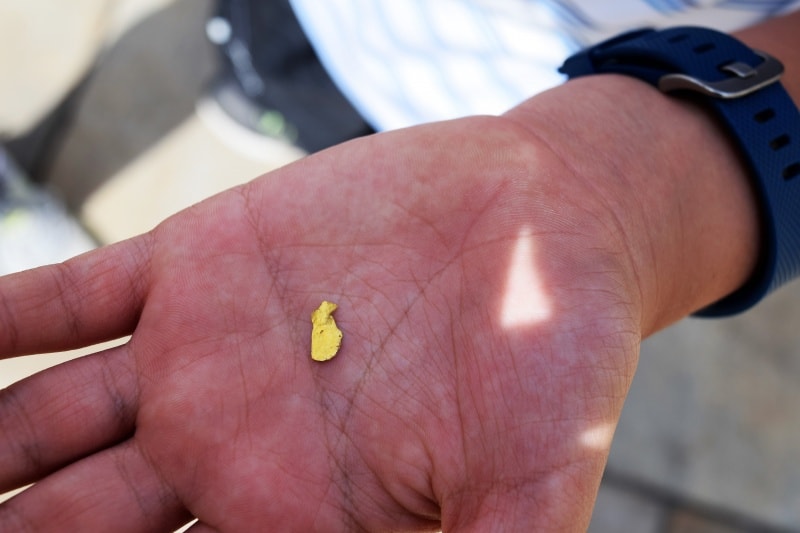
Next to Red Square is Russia’s most famous shopping mall, the State Department Store, GUM. It’s a gorgeous shopping complex filled with luxury retailers, like Hermes, Gucci and Burberry, shops much too pricey for Team Woods’ wallet.

What was fascinating about this place is hearing from Svetlana what it was like when she was a girl. She said in the early 1990’s, right before the fall of Communism in Russia, each shopfront sold the basic necessities. One place would sell shoes; the next sold vegetables; another sold bread, but only government issued items were available and selection was minimal.
The wait time for each store could be hours long. Svetlana remembers her mother waiting in line for 3 hours to purchase sandals for her. When it was finally her mother’s turn, the sandals in her size were all gone. Svetlana said that waiting in long lines for basic goods was a way of life for them. The communist regime kept the Russian people so isolated from the rest of the world that they did not know anything different and they never questioned the insanity of it.
Today, the only line you see at GUM is at the ice cream shop.

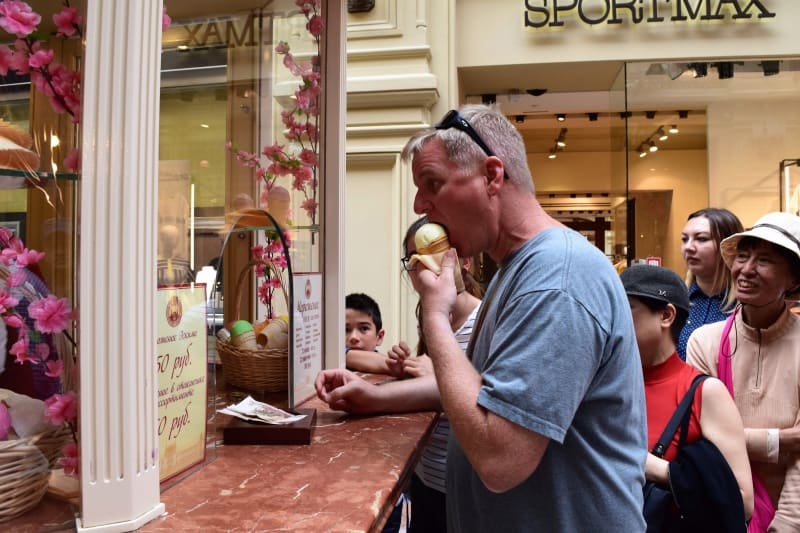
We sat down with Svetlana at a restaurant in GUM and enjoyed some interesting conversation about World War II. I often forget that the Russians were part of the Allied Forces during the war and I wasn’t aware how intensely Hitler hated the Russians. To be sure, Hitler’s imperialistic campaign all started with Sudentenland, which was part of the Russian state of Czechoslovakia. I was ashamed to admit my ignorance that 17 million Russians died during World War II!!
I told Svetlana about the D Day tour we took in Normandy and how our tour guide explained why the French surrendered to the Germans without a fight. She immediately stopped the conversation, put down her fork and said, “I want to hear what he said.” So, I told her that our guide said that when Germany invaded France, the French army had already been decimated protecting the Maginot Line. He reasoned that the average French citizen was not a soldier and therefore could not fight. So, they just put their heads down and tried to live their lives without conflict with the occupying Germans. I explained to Svetlana that we thought that Americans would have behaved quite differently.
Svetlana had a look of amazement on her face. She told us a story of how her grandmother shot artillery during World War II because all of the men had been killed fighting the Germans. She said that Russians would have fought with pitchforks and shovels to protect “Mother Russia.”
Indeed, part of the reason the D Day Invasion was so successful is because Germany’s best soldiers were fighting on the Russian front. The Russians fought fiercely and stubbornly and it took Germany’s ablest soldiers to hold the eastern front. The German soldiers in France were either old, very young and inexperienced or conscripted non-Germans whose allegiance to the Wehrmacht was questionable.
Russians are fiercely patriotic, quite similar to Americans, I believe, and they have suffered greatly as a people, not just during World War II, but also under the subsequent Communist regime.
Not surprisingly, much glorification of the Proletariat (the working class) remains in Moscow. You still see it in the subway stations…
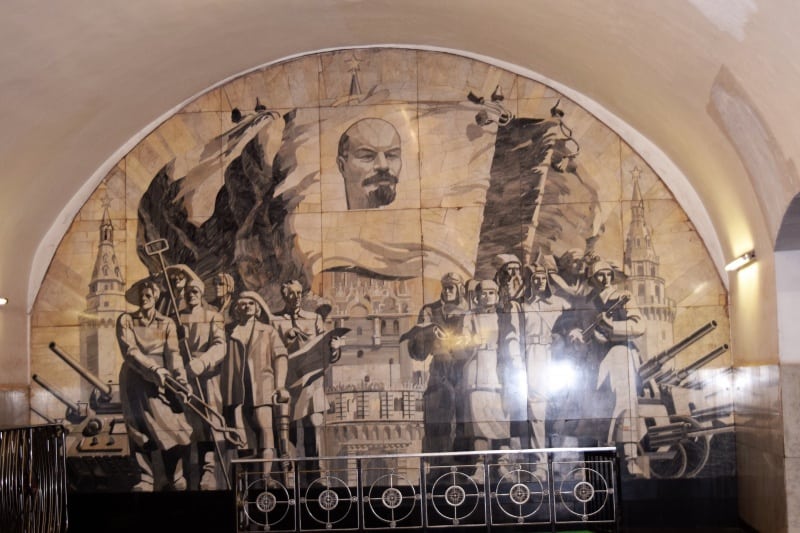
and in the public spaces.

An interesting observation that Svetlana pointed out to us was the various iterations of the Russian flag. This was the Russian flag used by Tsar Nicholas prior to World War I.
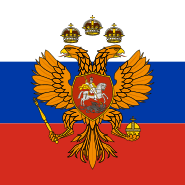
For 300 years, the 2-headed eagle had always been associated with the Russian monarchy. After the communist revolution, the U.S.S.R. changed it’s flag and removed the eagles in favor of the hammer and sickle representing the workers of the world.
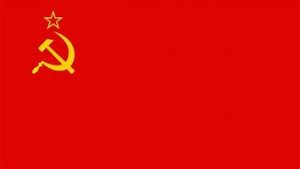
Currently, the flag of the Russian Federation is this.
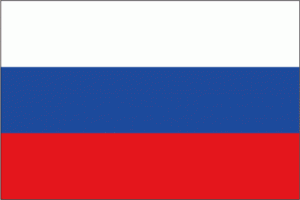 However, recently, under Putin’s leadership, you begin to see the 2-headed eagle creep back onto the scene. Here you can see that the imperial crest was restored on Moscow’s famous Bolshoi Theater.
However, recently, under Putin’s leadership, you begin to see the 2-headed eagle creep back onto the scene. Here you can see that the imperial crest was restored on Moscow’s famous Bolshoi Theater.
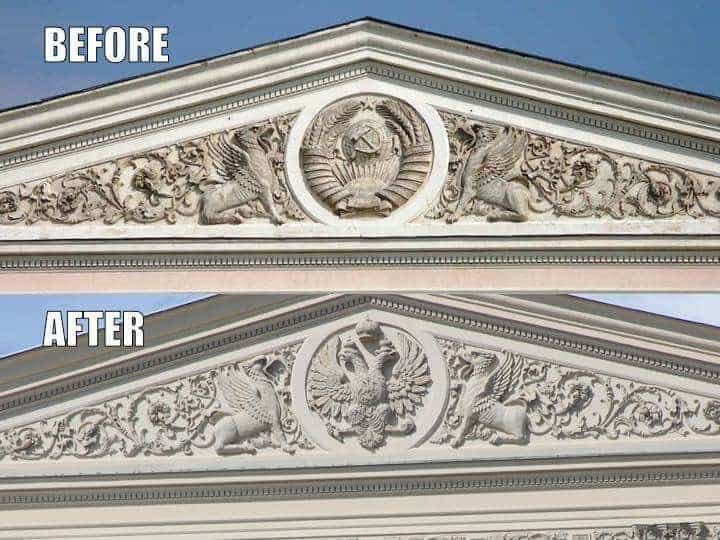 Some argue that the restoration of the crest is proper and simply returning the structure to its historical state. But, Svetlana hinted that there seems to be more at stake than historical restoration. Certainly, Putin seems intelligent enough to consider the implications of approving such renovations. What does this suggest about his governance? Does he consider himself to be a monarch?
Some argue that the restoration of the crest is proper and simply returning the structure to its historical state. But, Svetlana hinted that there seems to be more at stake than historical restoration. Certainly, Putin seems intelligent enough to consider the implications of approving such renovations. What does this suggest about his governance? Does he consider himself to be a monarch?
I asked Svetlana what she thought of Putin. She told me that she likes him. Yes, she was aware of the implications of corruption and self enrichment, but from her perspective Russia is stable under Putin’s administration. She remembers the food shortages and the instability of the time leading up to and immediately proceeding the fall of communism in Russia and she did not look fondly upon those years. Now, the Russian people are finally prospering and able to control their own destiny. She was OK with Putin and the oligarchs maintaining control as long as life continued in its current state with the middle class prospering and peace in their country.
I have to say that I can totally understand her point of view.
Thanks for the info about the history of Russia. I took a college class called The Course of Western Civilization and learned a lot about that part of the world and really enjoyed it; that was in ’62. And, I have always studied WW-2 history as well. Germany was able to get a lot of Russian soldiers to fight for them as opposed to being slaughtered. 6 million of them were slaughtered in the Holocaust along with the 6 million Jews. Hitler truly enjoyed killing them and wanted us to do the same. That brass bell you speak of must be the biggest ever made. I do not know about it, nor do I understand how they made it that big back then; all that brass had to have been poured at the same time.. The babies are almost grown it appears. Thanks a million for sharing